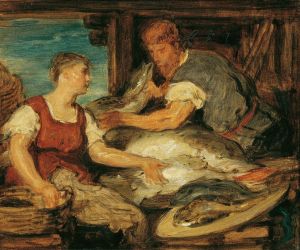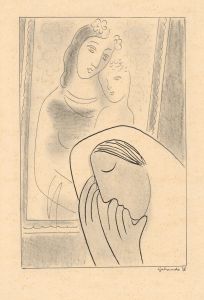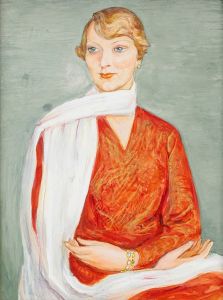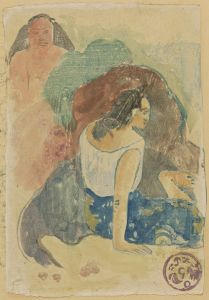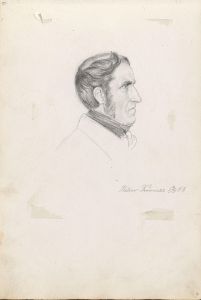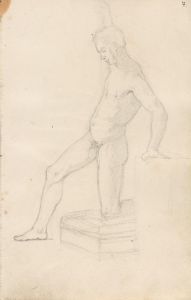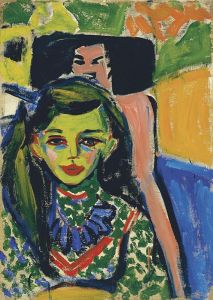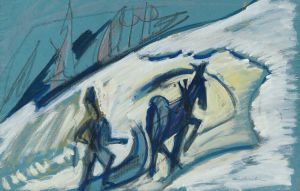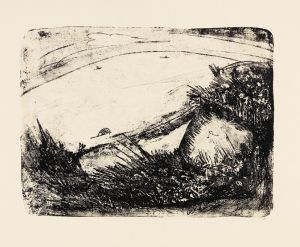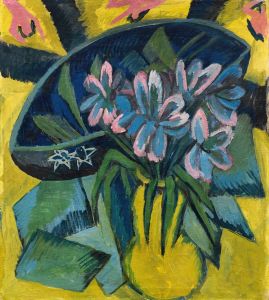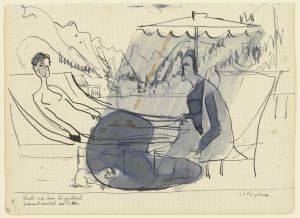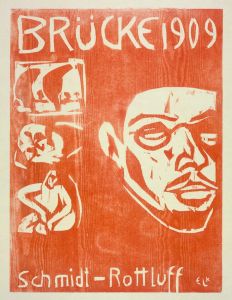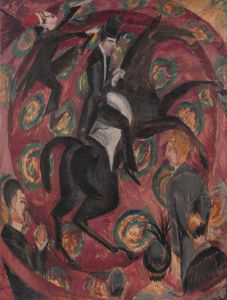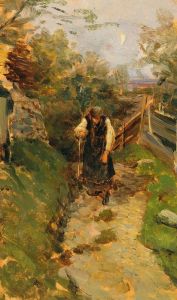
Sitzende Bäuerin
A hand-painted replica of Ernst Ludwig Kirchner’s masterpiece Sitzende Bäuerin, meticulously crafted by professional artists to capture the true essence of the original. Each piece is created with museum-quality canvas and rare mineral pigments, carefully painted by experienced artists with delicate brushstrokes and rich, layered colors to perfectly recreate the texture of the original artwork. Unlike machine-printed reproductions, this hand-painted version brings the painting to life, infused with the artist’s emotions and skill in every stroke. Whether for personal collection or home decoration, it instantly elevates the artistic atmosphere of any space.
Ernst Ludwig Kirchner was a prominent German expressionist painter and one of the founding members of the influential art group Die Brücke (The Bridge). His work is characterized by bold colors, dynamic compositions, and a focus on the human figure, often exploring themes of modernity and the human condition. One of his notable works is "Sitzende Bäuerin" (Seated Peasant Woman), which exemplifies his unique style and thematic interests.
"Sitzende Bäuerin" was created during a period when Kirchner was deeply engaged with the expressionist movement, which sought to convey emotional experience rather than physical reality. This painting reflects Kirchner's interest in capturing the essence of his subjects through exaggerated forms and vibrant colors. The work portrays a peasant woman seated, rendered in a manner that emphasizes her presence and character rather than realistic detail.
Kirchner's technique in "Sitzende Bäuerin" involves the use of bold brushstrokes and a vivid color palette, which are hallmarks of his expressionist style. The colors are not necessarily true to life but are chosen to evoke a certain mood or emotional response. This approach aligns with the broader goals of the expressionist movement, which aimed to express subjective emotions and experiences rather than depict objective reality.
The subject matter of "Sitzende Bäuerin" reflects Kirchner's interest in rural life and the depiction of individuals from different social strata. During the early 20th century, many artists, including Kirchner, were drawn to themes of rural life as a counterpoint to the rapidly industrializing world. This painting can be seen as part of Kirchner's exploration of these themes, capturing the dignity and resilience of the peasant class.
Kirchner's work, including "Sitzende Bäuerin," was influenced by various artistic movements and styles. He was inspired by the works of Vincent van Gogh and Edvard Munch, both of whom were known for their emotional intensity and innovative use of color. Additionally, Kirchner was influenced by non-Western art forms, particularly African and Oceanic art, which he encountered through ethnographic museums and collections. These influences are evident in his use of simplified forms and expressive lines.
The historical context of Kirchner's work is also significant. "Sitzende Bäuerin" was created during a time of great social and political upheaval in Germany. The early 20th century was marked by rapid industrialization, urbanization, and the tensions leading up to World War I. Artists like Kirchner responded to these changes by seeking new ways to express the complexities of modern life. His work often reflects a sense of alienation and anxiety, as well as a desire to reconnect with more primal and authentic aspects of human existence.
Ernst Ludwig Kirchner's contributions to the expressionist movement and his innovative approach to art have left a lasting impact on the art world. "Sitzende Bäuerin" is a testament to his ability to convey deep emotional resonance through his distinctive style. Today, Kirchner's works are celebrated for their boldness and emotional depth, and they continue to be studied and appreciated for their contribution to the development of modern art.





